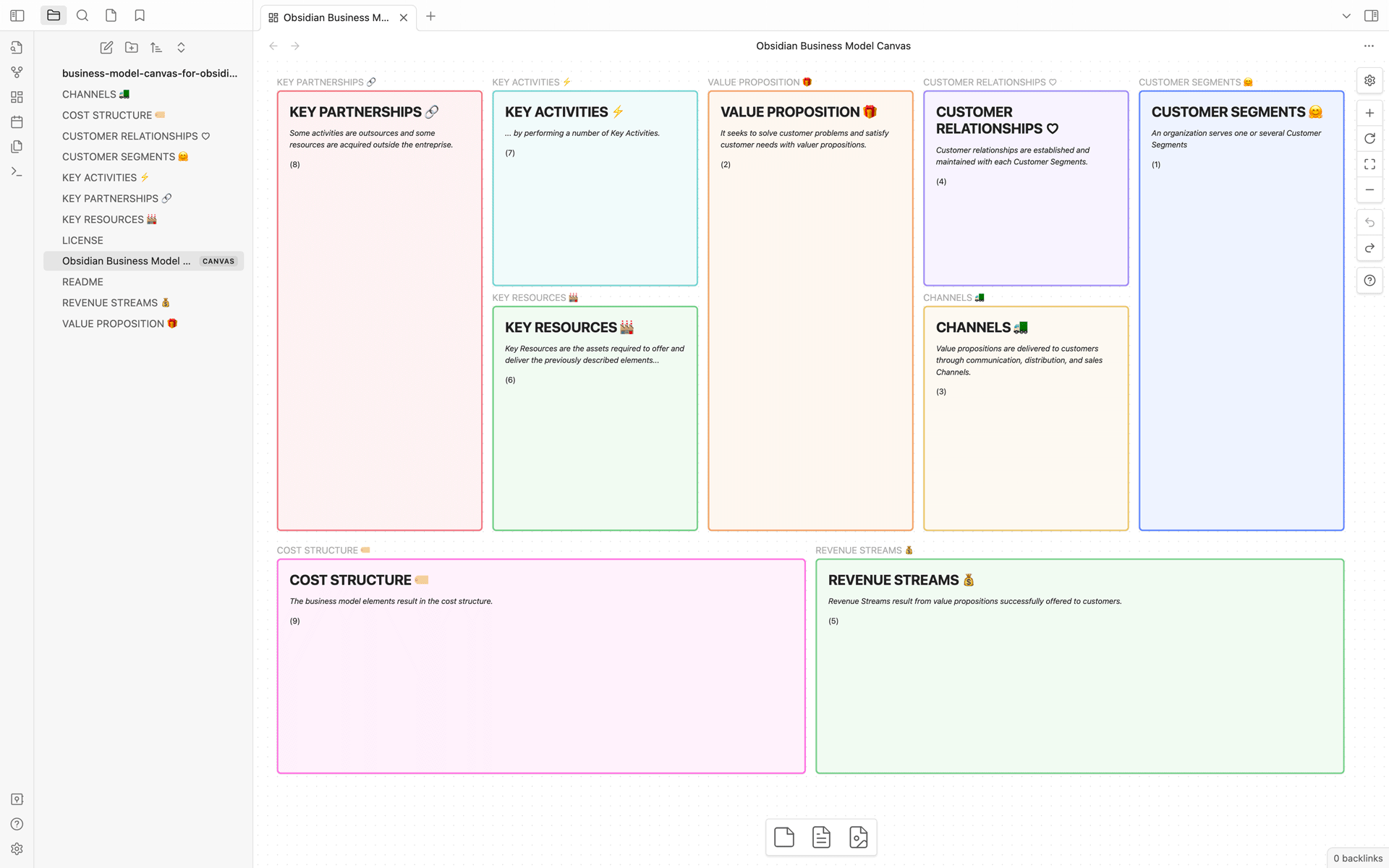A powerful tool for strategic planning
In the dynamic landscape of business, entrepreneurs and innovators constantly seek effective ways to articulate, design, and refine their business strategies. One tool that has gained widespread popularity for its simplicity and efficiency is the Business Model Canvas (BMC). In this blog post, we’ll explore the origins of the Business Model Canvas, look into its components, and discuss why it has become a tool that entrepreneurs worldwide love to use.
The Business Model Canvas was introduced by Alexander Osterwalder and Yves Pigneur in their book “Business Model Generation,” published in 2010. Osterwalder and Pigneur developed the canvas as a visual framework to help businesses conceptualize, describe, and challenge their business models in a concise and structured manner. The canvas quickly gained traction for its user-friendly approach to strategic planning and has since become a staple in entrepreneurship education and business development.
Components of the Business Model Canvas:
The Business Model Canvas comprises nine key building blocks that capture the essential aspects of a business. These blocks are:
- Customer Segments: Identifying and defining the target customers that the business aims to serve.
- Value Propositions: Articulating the unique value that the product or service offers to the target customers.
- Channels: Outlining the various ways the business delivers its value proposition to customers.
- Customer Relationships: Describing the type of interactions the business establishes with its customers.
- Revenue Streams: Specifying how the business generates income from its customers.
- Key Resources: Identifying the critical assets and resources necessary for the business to operate.
- Key Activities: Highlighting the key actions and processes required to deliver the value proposition.
- Key Partnerships: Identifying external entities or collaborators crucial to the success of the business.
- Cost Structure: Outlining the major costs and expenses associated with operating the business.
How to Use the Business Model Canvas:
The Business Model Canvas presents itself as a large visual chart, on a whiteboard or a large sheet of paper. Teams collaboratively fill in each block with post-it notes or markers, fostering discussion and alignment on critical aspects of the business. This dynamic and participatory approach allows for quick iterations and adjustments as the business model evolves.
Why the Business Model Canvas is a Useful Tool:
- Simplicity and Clarity: The canvas provides a simple and clear framework that condenses complex business models into a single visual snapshot, making it easier for teams to understand and communicate.
- Holistic Perspective: By examining all nine building blocks together, businesses can ensure a holistic view of their operations, fostering a comprehensive understanding of their strengths, weaknesses, and areas for improvement.
- Iterative and Dynamic: The canvas is designed for constant iteration and adaptation, allowing businesses to respond to changing market conditions and refine their strategies as needed.
- Communication and Collaboration: The visual nature of the Business Model Canvas encourages collaboration among team members and stakeholders, fostering a shared understanding of the business model and facilitating more effective communication.
In conclusion, the Business Model Canvas has emerged as a powerful tool for entrepreneurs and business leaders seeking a structured and visual approach to strategic planning. Its simplicity, adaptability, and ability to foster collaboration make it an invaluable asset in the ever-evolving world of business. Whether you’re a startup founder or a seasoned executive, the Business Model Canvas can guide you in crafting, refining, and communicating a robust business strategy.
How to use the Business Model Canvas with Obsidian
Obsidian is a note-taking app that allows users to create and organize notes in a unique way. It is designed for people who prefer to take a more interconnected and contextual approach to note-taking, rather than organizing notes hierarchically in folders. It takes full advantage of writing in Markdown to connect and visualise ideas within a beautiful interface.
After downloading the business model canvas folder from GitHub, pick the “open folder as vault” option in Obsidian.
You can then start filling your business model canvas. The template has a bunch of Markdown files, one for each box or building block. The .canvas file gathers all these text files together. You can input text on each .md file separately or type everything in the single .canvas document.
